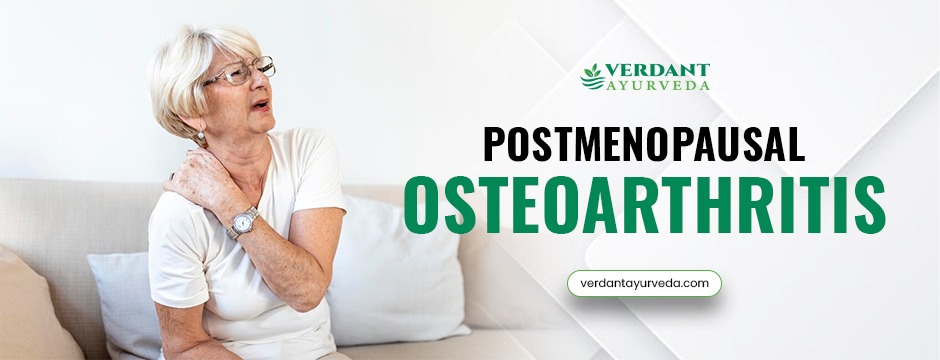
As women transition into postmenopause, there is an obvious shift in health; sudden fluctuations in hormones, alterations in metabolism, and clear changes in bone density and joint health. Among these changes, osteoarthritis (OA) often takes centre stage. OA is characterised by the wear and tear of cartilage, leading to pain, stiffness, and reduced mobility, and in postmenopausal women, OA can severely impact their physical and emotional health.
But the impact of OA will rarely be confined to the joints alone. Chronic pain is often accompanied by mood disorders such as anxiety, depression, irritability, and/or low energy. The biopsychosocial model tells us that physical pain and emotional stress are bidirectional in nature, where physical pain can cause psychological stress, while emotional stress can exacerbate the pain experience. Treatment adaptations for managing Postmenopausal Osteoarthritis women must attend to both, and this should be the focus of any clinical intervention. In this blog, we explore mindful and holistic strategies that nurture both body and mind.
Mindful Strategies for Pain Management in Postmenopausal Osteoarthritis
Meditation & Breathing Practices
- Mindfulness Meditation: Mindfulness is training ourselves to attend to the present moment without judgment, which can help soften our emotional reactivity to painful experiences.
- Pranayama (Breathing Practices): There are many breathing techniques, like alternate nostril breathing or deep diaphragmatic breath, that intentionally calm the nervous system and can decrease anxiety from physical pain.
Somatic Pain Awareness
- Body Scans: Noticing which parts of our body are tense offers us a level of awareness that may help us to release stress, tension, and the hold pain has over us in Osteoarthritis and estrogen.
- Guided Imagery: Imagining examples of warmth or softening within the areas in our body that are painful can help change our perception of pain and soothe discomfort.
Nutrition & Lifestyle Considerations
- Anti-Inflammatory Diet: Providing the highest consumption of whole foods-rich (omega-3s in fatty fish; antioxidants in berries, turmeric, ginger), this will support joint health and mental clarity.
- Hydration & Sleep: To stay hydrated and partake in restorative sleep supports physical repair and resilience to stress.
Environment & Daily Rituals
- Calming Spaces: Music, aroma (lavender), warm baths-all these go toward relaxation, and provide a loving contrast to the emotional and physical discomfort we live with.
- Soul-Nourishing Rituals: Those small rituals that are done mindfully, whether it’s journaling, colouring, gentle gardening, or making tea, are a ritualistic anchor for calm and positive energy.
Expressive Therapies
- Art or Music Therapy: Through creative avenues such as music, art, or writing, a way to express ongoing emotional burdens of chronic pain.
- Supportive Community: Whether in-person or virtual, peer groups to gentle movement classes, each supportive community invites connection to others and the opportunity to share lived experience.
Acceptance, Self-Compassion & Mental Resilience
- Acceptance Practices: Learning to embrace the uninvited guest of pain or injury, whom we sometimes reject, is intended to teach us, thus adding resilience and decreasing suffering.
- Gratitude & Self-Compassion: The ongoing daily practice of stopping to appreciate briefly what the body can do in that moment and extending kindness to yourself increases emotional well-being while building inner strength that can further the issue of valuing ourselves.
Professional Support & Integrated Care
- Mind–Body Clinics: Look for therapists who are trained in approaches such as acceptance-and-commitment therapy (ACT), mindfulness-based stress reduction (MBSR), or somatic experiencing.
- Movement Specialists: Physiotherapists familiar with osteoarthritis and postmenopausal care can deliver gentle programs that are consistent with mindful principles.
Digital Detox & Stress Control
Modern lifestyles subject women to daily digital stimuli—from scrolling social media to last-minute screen time—that can elevate stress levels, disrupt quality sleep and amplify pain perception. A digital detox can be life-changing, especially for women struggling with Postmenopausal Osteoarthritis.
- Screen-Free Time: It can be as simple as setting the first hour after waking and the last hour of the day (before bed) as screen-free time to help reboot the natural rhythm of the circadian clock while encouraging relaxation.
- Nature Focused: Spending mindfulness time in nature (a walk in a park, gardening, or sitting outside in the fresh air) can lower stress hormones and provide a great way for the body to introduce joint-friendly movement.
- Mindful Consumption: Engaging with uplifting and educational digital content instead of negative or distressing media can save the mind from needless emotional exposure.
Women can manage their mental wellness, support better quality sleep, and promote a natural connection within their mind-body experience by simply practising some level of balance with their use of technology.
Bottom Line
Postmenopausal osteoarthritis is more than a physical ailment—it’s an invitation to weave together mind and body with mindful care. Each step taken through gentle movement, each breath drawn with awareness, each self-compassionate pause is an act of healing. Emotional wellness and joint comfort share a journey; nurturing one often brings relief to the other.
Verdant Ayurveda offers a holistic avenue for this mindful wellness journey. With personalised Ayurvedic consultations, tailored wellness plans, and an integrated approach to physical, emotional, and mental well-being, we help women address the root of imbalance. Our expertise in holistic women’s health—including herbal guidance, dietary strategies, and lifestyle therapies—can be a nurturing support for postmenopausal OA and mental wellness.
